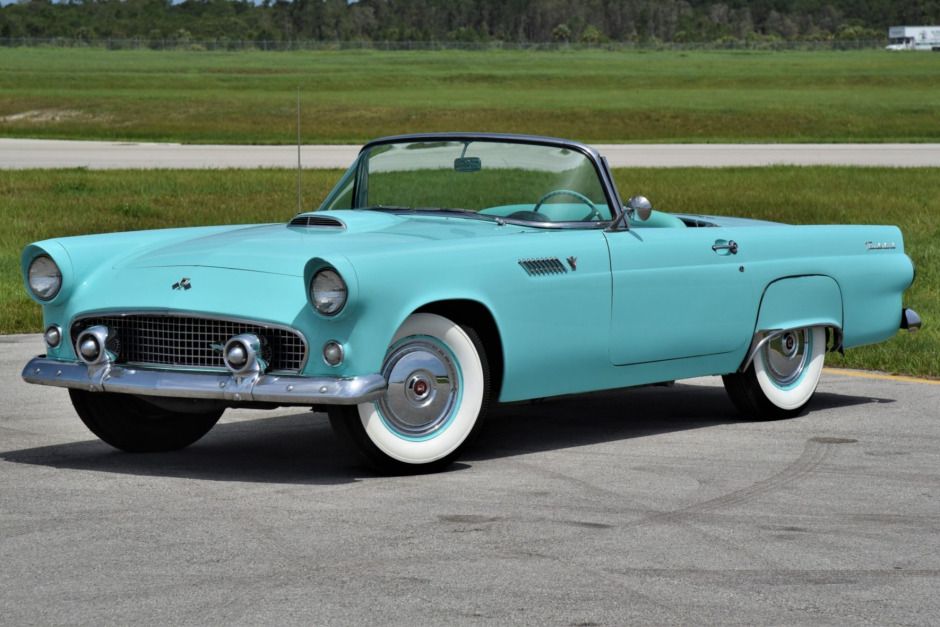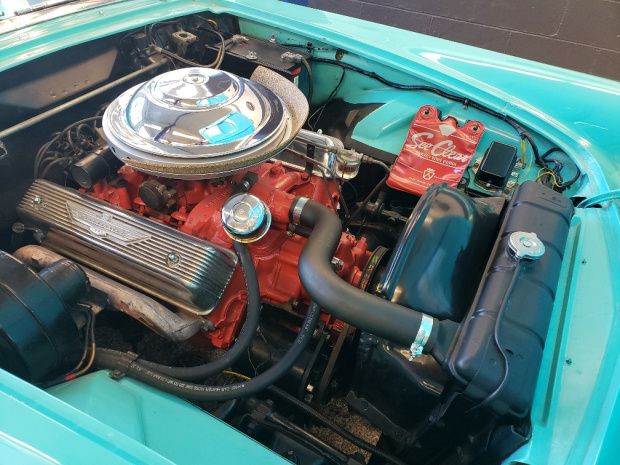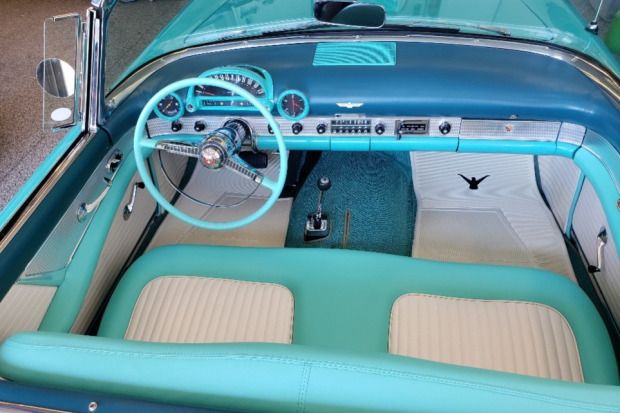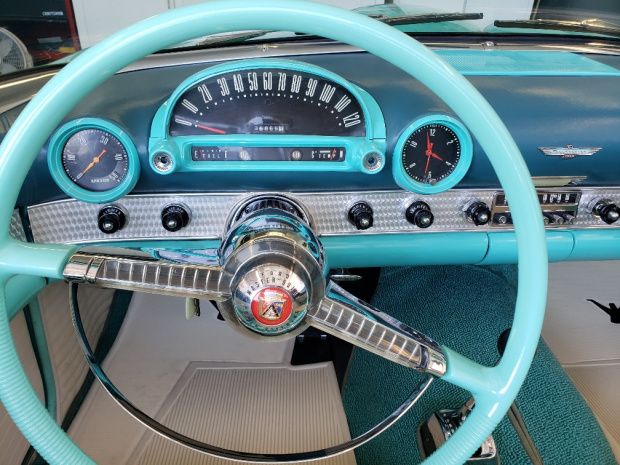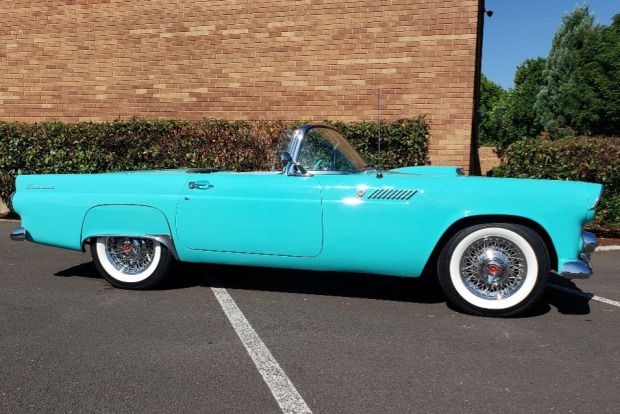The legendary Ford Thunderbird was produced by Ford for the model years 1955 to '57 and 2002 to '05 through eleven generations. Produced in a variety of distinct body configurations, the Ford Thunderbird first came out as a two-seat coupe, then a four-seat hardtop coupe with the final generation designed again as a two-seat convertible.
The first-generation T-bird was unveiled at the Detroit Auto Show on February 20th, 1954, with the first model coming off the production line on September 9th, 1954, and hit the market on October 1954 as a 1955 model.
The T-bird entered production in 1955 as a sporty two-seat convertible. Conceived primarily to challenge Chevy’s corvette, but unlike the Corvette, the Ford Thunderbird wasn't marketed as a sports car but as more of an upscale personal automobile. Ford announced the car as a personal luxury car because they knew that this would bring more appeal to the car considering the sports car market was limited at the time.
A record 16,155 models were sold in 1955—a lot more than what Ford had initially planned. The luxury coupe is considered among the most iconic American classics today and was ranked America’s favorite classic car according to a 1992 USA Today poll.
Let’s take a closer look at the legendary Ford Thunderbird and how it compares with its rivals.
Ford Thunderbird Performance Specs
After release, the Ford T-bird was immediately a smash hit. Buyers of all ages were awed, and more than 3,500 orders were placed in the first 10-day selling period. The 1955 Ford T-bird featured a rear-wheel drive train and a three-speed manual gearbox capable of covering 0-60 MPH in roughly 8.9 seconds. The Ford Y-block V8 in the front featured a 4,778 cubic cm / 291.6 cubic inch displacement and a gross power output of 148kW/198 HP with 386 Nm / 285 lb-ft of torque.
The Thunderbird version of the engine was named the “Thunderbird V8”. For cars equipped with a manual transmission, it produced a compression ratio of 8.1.1 and was rated at 193 BHP (144 kW) at 4,400 RPM. For cars equipped with an automatic transmission, a slightly higher compression ratio of 8:5:1 resulted in a 198 BHP (148 kW) at 4,400 RPM and 286 lb-ft of torque at 2,500 RPM. The Ford Thunderbird could max out at 100 to 115 MPH, depending on the type of transmission.
For the second year of production, the '55 Ford Thunderbird packed a 202 HP version of the 292-CID motor with 289 lb-ft of torque and Ford’s 312-CID engine pushing output to 215 HP and 317 lb-ft of torque for the manual trim and 317 lb-ft of torque for the automatic trim.
Several transmission choices are available for the Ford Thunderbird in the form of various manual and automatic choices. Transmission variants include a 2-speed and 3-speed Ford-O-Matic, as well as a 3-speed and 4-speed manual.
The Ford Thunderbird’s Interior
The 1955 Ford Thunderbird's design is one of those muscle car specials that still look as beautiful today as it did six decades ago. She offers an excellent driving experience. Vision over the hood is exceptionally good with a modern-looking, wrap-around windshield, and a slick dashboard that feature “idiot lights".
Standard trims feature an Astra-Dial control panel that contains a tachometer, a clock, and a speedometer with a max speed of 150 MPH. The stylish two-seat cabin was also fitted with four-way power seats, which could be adjusted with multi-directional switches and power windows, something very rare, especially for a car from the ’50s.
The dash also features an illuminated ignition switch, courtesy light with automatic door switches, glove box, and dual horns. Other options included four-way power seats, power brakes, white sidewall tires, a stereo system, automatic door switches, air conditioning, and a cigarette lighter.
The Ford T-bird’s Exterior Design
The T-bird’s exterior boasts a steel unibody measuring 175.3 inches in length, 70.3 inches in width, and a height of 52.2 inches. The total curb weight stands at 3,260 lbs on top of a wheelbase of 102 inches. The standard trim of the T-bird came with a removable fiberglass hardtop with soft-top variants also available.
The aggressive front end with hood scoops complements the car’s beautiful European styling mixed with American flavor. The stylish cabin tapers off into the rear with circular tail lamps and exhaust ports embedded in the rear bumper. Fun fact; the name Thunderbird is believed to have been derived from a god worshipped by south western native Americans believed to bring rain and prosperity.
Ford struck the perfect balance between comfort, convenience, and power with the Thunderbird’s release, and this became very evident by how much the T-bird outsold its competitor, the Chevy Corvette, in its year of release. The first generation Ford Thunderbird will, without a doubt, go down in the history books as one of the most well-known and well-recognized American muscle classics from the ’50s.

